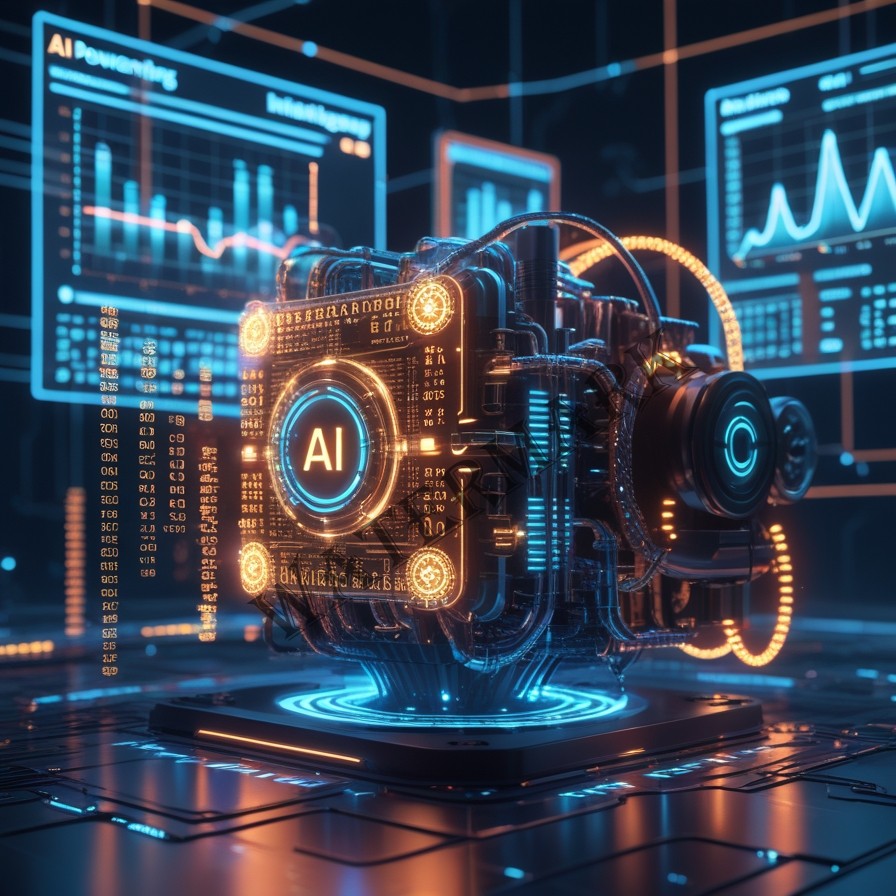Categories: AI Skills 2025 and Beyond, Computer Vision, Data and AI, Data Cleaning, Data Collection, Essential AI 101, Future of AI, General Business, Machine Learning, Natural Language Processing, Python, SQL, Structured Data, Types of AI, Types of Data, Unstructured Data
AI is only as smart as the data it learns from. 📊 In this episode of AI Innovations Unleashed, we dive into:
✅ Why data is the backbone of AI
✅ How to collect, clean, and preprocess data
✅ Must-have data skills: SQL, Python, and visualization
If you’re in AI, understanding data is a game-changer! 🚀
Reference List
- Russell, S., & Norvig, P. (2020).Artificial Intelligence: A Modern Approach (4th ed.). Pearson.
- A comprehensive book covering AI fundamentals, including machine learning, data processing, and real-world AI applications.
- Goodfellow, I., Bengio, Y., & Courville, A. (2016).Deep Learning. MIT Press.
- An in-depth exploration of deep learning and how AI systems process structured and unstructured data.
- Provost, F., & Fawcett, T. (2013).Data Science for Business: What You Need to Know about Data Mining and Data-Analytic Thinking. O’Reilly Media.
- A guide to data-driven decision-making, focusing on how AI uses structured and unstructured data.
- McKinney, W. (2017).Python for Data Analysis: Data Wrangling with Pandas, NumPy, and Jupyter (2nd ed.). O’Reilly Media.
- A practical introduction to Python for data science, focusing on data cleaning, preprocessing, and visualization.
- Kelleher, J. D. (2019).Deep Learning (MIT Press Essential Knowledge Series).
- A beginner-friendly book explaining the principles of deep learning and data-driven AI models.
- Van der Lans, R. (2006).Introduction to SQL: Mastering the Relational Database Language (4th ed.). Addison-Wesley.
- A foundational book on SQL and how databases structure and store AI training data.
- Domingos, P. (2015).The Master Algorithm: How the Quest for the Ultimate Learning Machine Will Remake Our World. Basic Books.
- A high-level overview of machine learning and how AI systems process vast amounts of data.
- Manning, C., Raghavan, P., & Schütze, H. (2008).Introduction to Information Retrieval. Cambridge University Press.
- Covers Natural Language Processing (NLP) and how AI interprets and structures text data.
Additional Resources
- Google’s Machine Learning Crash Course – https://developers.google.com/machine-learning/crash-course
- A free, interactive introduction to AI, machine learning, and data preprocessing.
- IBM Data Science Professional Certificate (Coursera) – https://www.coursera.org/professional-certificates/ibm-data-science
- A hands-on learning experience in Python, SQL, and AI-driven data analytics.
- Stanford’s CS229: Machine Learning Course – https://cs229.stanford.edu/
- Lecture notes and assignments from one of the top machine learning courses in the world.
- Tableau Public – https://public.tableau.com/
- A free data visualization tool to practice presenting AI insights.
- The Elements of AI (University of Helsinki) – https://www.elementsofai.com/
- A beginner-friendly course that explains how AI processes and interprets data.
- Google Cloud BigQuery for SQL & Data Analysis – https://cloud.google.com/bigquery
- A practical tool for handling large datasets with SQL and AI-powered analytics.
- DataCamp’s Python & SQL Training – https://www.datacamp.com/
- Offers beginner-to-advanced courses in data manipulation, SQL, and AI-driven analytics.
- MIT OpenCourseWare: Introduction to Deep Learning – https://ocw.mit.edu/courses/electrical-engineering-and-computer-science/6-s191-introduction-to-deep-learning-january-iap-2020/
- A free resource covering deep learning and AI model development.
Additional Readings
- Halevy, A., Norvig, P., & Pereira, F. (2009). “The Unreasonable Effectiveness of Data.” IEEE Intelligent Systems, 24(2), 8–12.
- Explains why large, well-structured datasets are more powerful than complex AI algorithms.
- Gebru, T., et al. (2018). “Datasheets for Datasets.” arXiv preprint arXiv:1803.09010.
- Discusses ethical AI data collection and how biases in training data impact AI outcomes.
- Ng, A. (2018). “AI Transformation Playbook.” Landing AI.
- A guide to how businesses can adopt AI, focusing on the role of data preparation and model training.
- LeCun, Y., Bengio, Y., & Hinton, G. (2015). “Deep Learning.” Nature, 521(7553), 436–444.
- Covers the foundations of deep learning and how AI models learn from massive datasets.
- Cathy O’Neil (2016).Weapons of Math Destruction: How Big Data Increases Inequality and Threatens Democracy.
- A critical look at AI bias, data ethics, and the real-world consequences of bad data.
- Dwork, C., & Mulligan, D. K. (2013). “It’s Not Privacy, and It’s Not Fair.” Stanford Law Review Online, 66, 35.
- Explores the privacy and fairness implications of AI-driven decision-making.
- Chollet, F. (2018).Deep Learning with Python. Manning Publications.
- Covers how AI learns from structured and unstructured data with practical examples.
- Pasquale, F. (2020).New Laws of Robotics: Defending Human Expertise in the Age of AI.
- Discusses the ethical and societal impact of data-driven AI decision-making.


